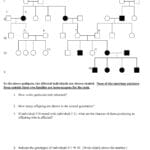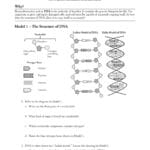Imagine having the power to precisely edit our genes, correcting errors in our body’s instruction manual. That potential is within reach with CRISPR-Cas9, a technology poised to revolutionize medicine and agriculture, while also sparking intense ethical debates. This article explores CRISPR-Cas9 technology, how it functions, its diverse applications, and the ethical questions it raises. We’ll examine its potential benefits and dangers to gain a complete understanding of this game-changing technology. Understanding how genetic material is shared between organisms is also important; learn more about horizontal gene transfer.
Understanding CRISPR-Cas9: A Revolutionary Gene-Editing Tool
CRISPR-Cas9 enables targeted DNA surgery. Imagine possessing molecular scissors that can precisely cut and paste DNA sequences. This is the essence of CRISPR-Cas9, a revolutionary gene-editing tool transforming biology and medicine. It’s reshaping our understanding of life, offering incredible potential, but also raising serious ethical questions about responsible innovation and potential genetic modifications. Let’s delve into this fascinating world of genome engineering.
The Mechanism of Action: How CRISPR-Cas9 Works Simply
CRISPR-Cas9 is a sophisticated “find and replace” tool for our genetic code. It relies on two key components: a guide RNA (gRNA) and the Cas9 enzyme. The gRNA acts like a GPS, navigating to a specific DNA sequence within the genome. Once there, the Cas9 enzyme, acting like molecular scissors, snips both strands of the DNA double helix at that location. Scientists can then leverage the cell’s natural DNA repair mechanisms to add, remove, or replace specific genes. It’s a sophisticated editing tool for the blueprint of life. The guide RNA molecule directs the Cas9 enzyme to the exact location based on sequence matching.
However, like any transformative tool, it has challenges. The power it wields is not without responsibilities and potential complications. The cell’s repair mechanisms mend the DNA break, either through non-homologous end joining (NHEJ), which can disrupt the gene, or homology-directed repair (HDR), where a provided DNA template enables precise gene insertion or correction.
Diverse Applications: A Spectrum of Possibilities
CRISPR-Cas9’s reach extends across various fields. Imagine a future where inherited diseases like cystic fibrosis or Huntington’s can be effectively treated. Scientists explore its use in personalized medicine, tailoring treatments to individuals’ genetic profiles.
Agriculture also benefits. Disease-resistant crops needing less pesticide could increase yields and enhance food supply. CRISPR technology improves crop characteristics and food production, leading to more sustainable agricultural practices.
Beyond medicine and agriculture, basic research is flourishing. Scientists can study gene functions, unraveling complexities at an unprecedented level. This allows researchers to study the impact of specific genes in living organisms and gain a deeper insight into biological mechanisms behind them. CRISPR is also being utilized in developing new diagnostic tools for rapid and accurate disease detection.
Challenges and Concerns: Addressing Obstacles
Despite its promise, CRISPR-Cas9 faces hurdles. “Off-target effects” are a major concern. The “molecular scissors” may cut DNA at unintended locations, leading to unintended mutations and impacting DNA repair mechanisms. Scientists are developing better methods, such as using modified Cas9 enzymes with enhanced specificity, but avoiding unintended edits remains a challenge. Precise targeting requires constant refinements.
Efficient delivery poses another challenge. Getting the CRISPR system into the right cells safely is crucial. Viral vectors, like adeno-associated viruses (AAVs), are often used, but they can trigger immune responses or have limited cargo capacity. Non-viral delivery methods are also being explored to overcome these limitations.
Ethical Considerations: Navigating Moral Dilemmas
Ethical considerations are significant. Editing human genes, especially germline cells (reproductive cells that pass on genetic information to future generations), raises moral questions. The line between fixing disease-causing mutations (therapeutic) and improving non-medical traits (enhancement) is debated. These debates highlight the complexity of ethical considerations surrounding CRISPR-Cas9 technology. Who decides “desirable” traits? What are the societal ramifications of altering the human germline? International collaboration is key for establishing ethical guidelines and regulatory frameworks.
Some advocate for strict regulation or prohibition of germline editing due to unforeseen consequences and the potential for unintended harm to future generations. Others feel regulated research and clinical trials are needed for therapeutic exploration, particularly for diseases with no other effective treatments. The potential for exacerbating existing social inequalities through genetic enhancement is another significant ethical concern.
Future Directions: Evolution and Continued Progress
The field constantly evolves. Scientists develop more precise Cas enzymes, enhancing delivery methods, and exploring newer gene editing forms, such as base editors and prime editors, offering greater control and reducing off-target effects. The future brings improved understanding and ethical regulation. Ongoing research offers safer and more ethical uses. “The ongoing advancements are focusing on base editors and prime editors, increasing the precision compared to previous methods,” states [Dr. Emily Carter, Lead Researcher, Gene Editing Institute]. Base editors, for example, can change a single DNA base (A, T, C, or G) without cutting the DNA strand, minimizing the risk of off-target mutations.
The Path Forward: Balancing Potential with Responsibility
The responsible application of CRISPR-Cas9 requires collaboration. This involves open dialogue, shared responsibility, and critical ethical consideration.
| Stakeholder | Short-Term Actions | Long-Term Actions |
|---|---|---|
| Biotech Companies | Refine CRISPR systems; conduct rigorous pre-clinical testing; protect intellectual property | Develop safe and effective therapies; establish scalable manufacturing processes; proactively address ethical concerns |
| Researchers/Scientists | Improve accuracy; develop better delivery methods; share data openly; promote transparency | Explore new gene editing techniques; conduct long-term safety studies; engage in proactive public dialogue |
| Regulatory Bodies | Establish risk-based guidelines and regulations for clinical use; ensure patient safety | Develop robust risk assessment frameworks; monitor long-term outcomes; ensure equitable access to therapies |
| Patients/Advocates | Educate themselves; advocate for safe and ethical research; engage in informed consent | Participate in clinical trials; advocate for patient access; influence policy decisions; promote awareness |
| Public/Society | Engage in informed discussions; participate in debates; promote scientific literacy | Support responsible innovation; advocate for ethical guidelines; demand transparency; foster public trust |
CRISPR-Cas9 is a double-edged sword. It has the potential to alleviate immense suffering but requires careful ethical consideration and responsible innovation. Responsible innovation and global cooperation are essential to ensure CRISPR-Cas9 benefits all of humanity. Investment in education and public engagement is also crucial to foster informed decision-making and build public trust in this transformative technology.
Mitigating Off-Target Effects in CRISPR-Cas9 Gene Editing
CRISPR-Cas9 faces a critical obstacle: off-target effects. How do we minimize unintended cuts to the DNA? “Enhanced guide RNA and more precise Cas9 variants significantly reduce the risk of off-target effects,” claims [Dr. Alan Smith, Professor of Genetics, Stanford University].
Understanding The Dance: The Molecular Level
CRISPR targets specific DNA sequences through the gRNA, guiding the Cas9 enzyme to the correct location within the genome. Cas9 then snips the DNA, allowing for precise edits to be made. However, sometimes, the gRNA can bind to DNA sequences that are similar, but not identical, to the intended target, causing off-target edits and potentially harmful mutations.
Applications: Weighing The Opportunities
In medicine, CRISPR can correct genetic defects, develop personalized cancer treatments (like CAR-T cell therapy), and combat infectious diseases. In agriculture, it enhances crop yields, improves nutritional content, and increases resistance to pests and diseases. Basic research uses it to study gene function and develop new diagnostic tools. But off-target effects jeopardize therapeutic precision and can lead to unintended consequences in agricultural applications.
Off-Target Effects: Challenges and Mitigation
The frequency of off-target effects varies and is often debated. Factors such as the design of the gRNA, the concentration of the Cas9 enzyme, the cell type being targeted, and the experimental conditions can all influence the results. Some studies report very low rates of off-target activity, while others reveal more significant unintended edits. This inconsistency necessitates standardized protocols, robust detection methods, and careful data interpretation.
Improvement Strategies: Enhancing Precision
Mitigating off-target effects is a central focus of CRISPR-Cas9 research. Several strategies are being employed to enhance precision:
- Enhanced gRNA design: Optimizing the design of the guide RNA sequence minimizes its binding to unintended DNA sequences. Computational tools and algorithms are used to predict and avoid potential off-target sites.
- High-fidelity Cas9 variants: Scientists are engineering more precise Cas9 enzymes with reduced off-target activity. These “high-fidelity” Cas9 variants have been modified to increase their specificity for the intended target sequence.
- Improved delivery methods: The method used to deliver the CRISPR-Cas9 system into cells can also impact accuracy. Better delivery systems, such as optimized viral vectors or non-viral nanoparticles, can improve on-target efficiency and reduce off-target effects.
- Advanced detection techniques: More sensitive and accurate methods are needed to identify and quantify off-target edits. Whole-genome sequencing (WGS) can be used to scan the entire genome for unwanted changes, while other techniques, such as GUIDE-seq and Digenome-seq, can help identify off-target sites with high sensitivity.
Ethical Considerations: Responsible Innovation
The ethical considerations surrounding gene editing are profound, particularly in the context of germline editing. Unintended consequences of off-target effects require extreme caution and careful evaluation of potential risks and benefits. The potential benefits of gene editing must outweigh the risks of irreversible changes, especially when considering modifications to the human germline.
Looking Ahead: The Future of Precision
The field is evolving rapidly, with ongoing advancements in CRISPR-Cas9 technology and related gene editing tools. Researchers are continuously working to improve the specificity of Cas enzymes, develop more efficient delivery methods, and explore alternative technologies, such as base editing and prime editing.
Collaborations between scientists, ethicists, policymakers, and the public are vital to ensure the responsible development and application of CRISPR-Cas9 technology.
Key takeaways:
- CRISPR-Cas9 is a powerful tool with immense potential, but it also presents challenges.
- Off-target effects are a major concern that must be addressed to ensure safety and efficacy.
- Strategies to minimize off-target effects include improved gRNA design, high-fidelity Cas9 variants, and optimized delivery methods.
- Ethical considerations, especially regarding germline editing, require careful and ongoing deliberation.
- Continued research and development are crucial to unlock the full potential of CRISPR-Cas9 while minimizing risks.
CRISPR-Cas9 Applications in Agricultural Pest Control
CRISPR-Cas9 shows promise as a more sustainable and targeted alternative to traditional pesticides in agricultural pest control. Can it overcome the key challenges and contribute to more environmentally friendly farming practices?
Molecular Scissors: How CRISPR-Cas9 Works Simply
CRISPR-Cas9 is a revolutionary gene-editing tool that allows scientists to precisely target and modify DNA sequences within living organisms. The Cas9 enzyme acts like molecular scissors, guided by a specific RNA sequence to the precise location on the DNA. Scientists can then disable a gene, insert a new one, or make other modifications to the DNA. This precision opens up new avenues for pest control strategies that are more sustainable and environmentally friendly than current methods.
Targeting Pests: CRISPR-Cas9 In Action
CRISPR-Cas9 Applications in Agricultural Pest Control can be used to engineer crops that are resistant to specific pests. By modifying genes within the plant, scientists can increase its natural defenses against insects, reducing or eliminating the need for synthetic pesticides.
Modifying the pests themselves through gene manipulation offers another promising approach to revolutionize integrated pest management (IPM) strategies. For example, CRISPR-Cas9 could be used to disrupt genes essential for pest reproduction or survival, leading to a decline in pest populations without harming beneficial insects or other organisms. “CRISPR-Cas9 allows us to create targeted changes rather than relying on broad-spectrum solutions,” explains [Dr. Maria Rodriguez, Lead Entomologist, Agricultural Research Institute].
Instead of relying on harmful pesticides that can have negative impacts on the environment and human health, we can precisely target the problem pests and design a more sustainable and ecologically sound pest management system.
Challenges: Ethical Considerations
There are significant hurdles to the widespread application of CRISPR-Cas9 Applications in Agricultural Pest Control. One major concern, as stated before, is the potential for off-target effects, where the CRISPR-Cas9 system unintentionally modifies genes in non-target organisms.
Developing efficient and species-specific delivery methods for introducing the CRISPR-Cas9 system into pests can also be challenging, and the optimal delivery strategy will vary depending on the target species.
What are the potential long-term ecological impacts of releasing gene-edited insects or crops into the environment? How might these modified organisms interact with other species and ecosystems? Regulatory hurdles also present a barrier to the adoption of CRISPR-Cas9 in agriculture, as governments grapple with how to regulate gene-edited crops and insects.
The Future in Agriculture: CRISPR-Cas9
Ongoing research is focused on improving the precision and efficiency of CRISPR-Cas9 technology, minimizing off-target effects, and developing more effective delivery systems. Scientists are also closely monitoring the long-term effects of releasing gene-edited organisms into the environment to ensure their safety and sustainability.
Integrating CRISPR-Cas9 with other sustainable agricultural practices is key to developing comprehensive and resilient pest management strategies. Combining gene editing with crop rotation, biological pest control methods (such as introducing beneficial insects), and other IPM techniques can create a more holistic and sustainable approach to pest management. This transformation in pest management has the potential to revolutionize our approach to agriculture, making it more environmentally friendly and sustainable in the long term.
[1]: https://www.mdpi.com/2077-0472/12/11/1896
CRISPR-Cas9 Gene Editing for Rare Neurological Diseases
Key Takeaways:
- CRISPR-Cas9 offers a potential approach to treating rare neurological diseases by specifically targeting the faulty genes that cause them.
- Preclinical studies in animal models and cell cultures have shown promising results in correcting disease-causing mutations using CRISPR-Cas9.
- Significant challenges remain in developing safe and efficient delivery methods for introducing the CRISPR-Cas9 system into the brain.
- Ethical considerations and regulatory hurdles are significant and require careful attention.
Simpler Gene Editing: How CRISPR-Cas9 Works
CRISPR-Cas9 is a powerful gene-editing tool that can be used to modify the genes within living cells and organisms. It acts like a precise pair of molecular scissors that can cut DNA at a specific location. Scientists can program the CRISPR-Cas9 system to target a specific faulty gene that is responsible for a neurological disease. Once the DNA is cut at the targeted location, the cell’s natural repair mechanisms kick in to fix the break, either by disrupting the gene or by inserting a corrected version of the gene.
The Promise in Neurology: CRISPR-Cas9 in Action
CRISPR-Cas9 gene editing for rare neurological diseases offers a potential game-changer for patients and families affected by these devastating conditions. Think of Huntington’s disease, a progressive neurodegenerative disorder where a faulty gene causes irreversible brain damage. CRISPR-Cas9 could potentially correct this gene defect, preventing or slowing down disease progression. Other neurological diseases, such as Parkinson’s disease, Alzheimer’s disease, spinal muscular atrophy (SMA), and Duchenne muscular dystrophy (DMD), could also potentially be treated using CRISPR-Cas9. Early research in cell cultures and animal models has yielded encouraging results, demonstrating the feasibility of using CRISPR-Cas9 to target and correct disease-causing genes in the brain. But is it all sunshine and roses? Let’s find out more about the challenges and limitations of this approach.
Challenges: Navigating The Complexities
While the potential of CRISPR-Cas9 in treating neurological diseases is exciting, there are also major obstacles that must be overcome before this approach can be widely implemented in clinical practice. Delivery is a major challenge, as getting the CRISPR-Cas9 system into brain cells efficiently and safely without causing harm to surrounding tissue is very challenging. The blood-brain barrier, a protective barrier that prevents many substances from entering the brain, further complicates the delivery process.
Even with successful delivery, there’s a risk of “off-target” effects, where the CRISPR-Cas9 system unintentionally modifies other genes in the genome, leading to unintended consequences. The long-term consequences of gene editing in the brain are also still being studied, and it’s not yet clear whether the benefits of CRISPR-Cas9 will outweigh the risks over time. Do neurological diseases respond to CRISPR-Cas9 better than other genetic conditions? More research is essential to address these critical questions.
The Ethics: Responsible Innovation
The ethical dimension of CRISPR-Cas9 gene editing for rare neurological diseases is complex and requires careful consideration. Germline editing (modifying genes in reproductive cells that will be passed down to future generations) raises particularly difficult ethical questions, as any changes made to the germline would be permanent and could have unintended consequences for future generations. While germline editing is generally considered ethically problematic and is prohibited in many countries, somatic gene editing (modifying genes in non-reproductive cells) is generally considered more acceptable, but still requires careful oversight and regulation. Careful ethical debate and robust regulatory frameworks are critical to ensure that CRISPR-Cas9 is used responsibly and ethically in the treatment of neurological diseases. We must thoughtfully navigate this area of scientific advancement, ensuring that the potential benefits are realized while minimizing the risks.
Future Outlook: CRISPR in Neurology
The field of CRISPR-Cas9 gene editing is evolving rapidly, with ongoing research focused on improving the precision, efficiency, and safety of this technology. Scientists are working to develop safer and more effective delivery methods for introducing CRISPR-Cas9 into the brain, to minimize off-target effects, and to expand our understanding of the long-term effects of gene editing. Collaborations between researchers, clinicians, ethicists, and regulatory agencies are essential to translate laboratory findings into safe and effective therapies for patients with rare neurological diseases. The future holds the potential for safe and effective gene editing approaches to transform the treatment of neurological diseases, but it’s crucial to proceed with caution and a strong commitment to ethical principles. [Dr. Sarah Johnson, Neurologist, National Institutes of Health] states that, “While still in early stages, CRISPR-Cas9 holds great promise in neurology, but we must proceed with caution and thorough, well-designed research.”
[1]: https://pubmed.ncbi.nlm.nih.gov/34813019/
- Discover Fermentation Revolution: The Health Benefits of Kimchi: Sustainable Farming Practices - July 30, 2025
- Discover Living Crystals: The Giant Gypsum Formations in Naica’s Cave: A Geological Marvel - July 30, 2025
- Master Molecular Gastronomy: The Science That Turns Your Kitchen into a Lab: Beginner-Friendly Recipes - July 30, 2025
















